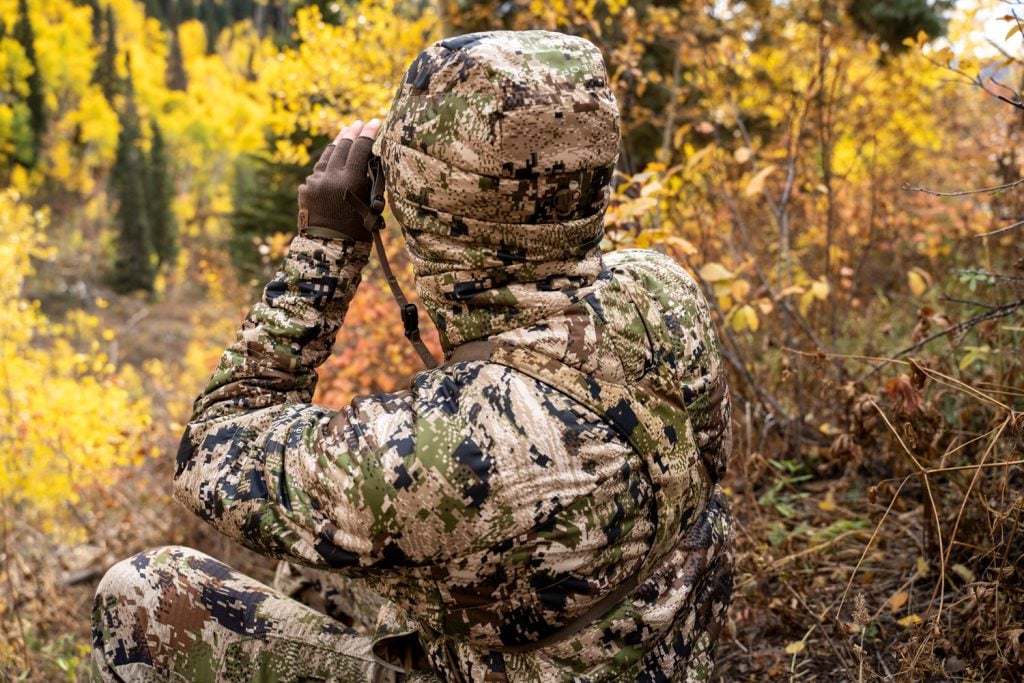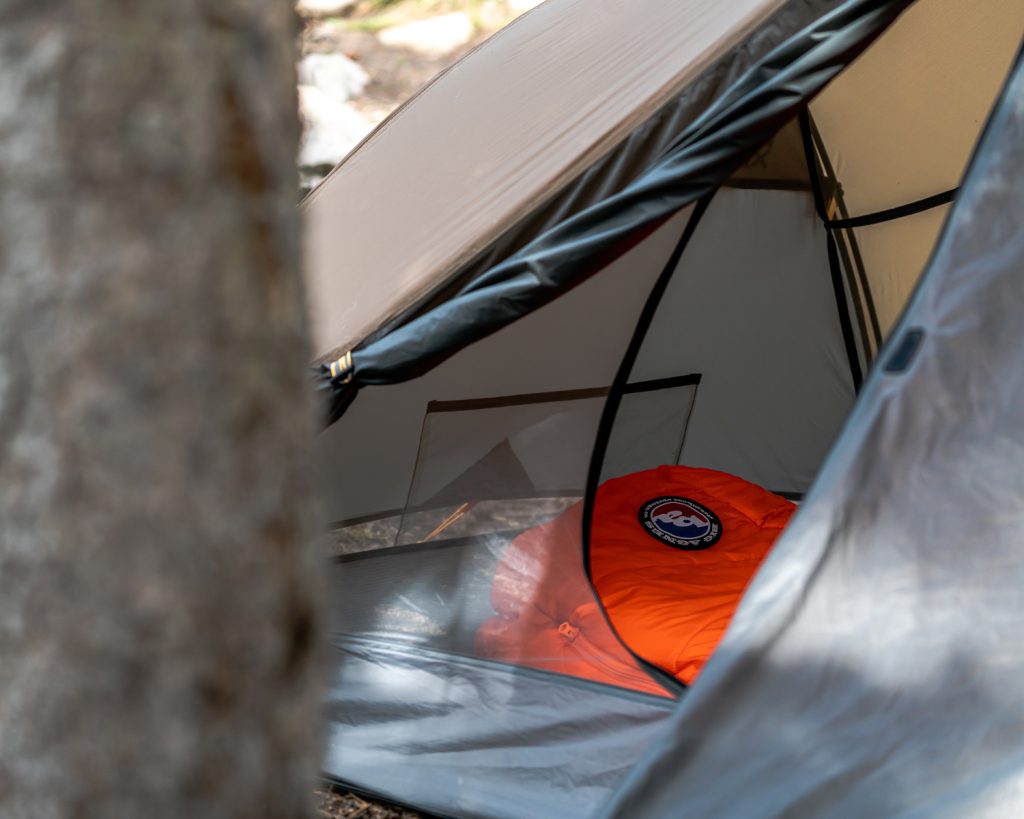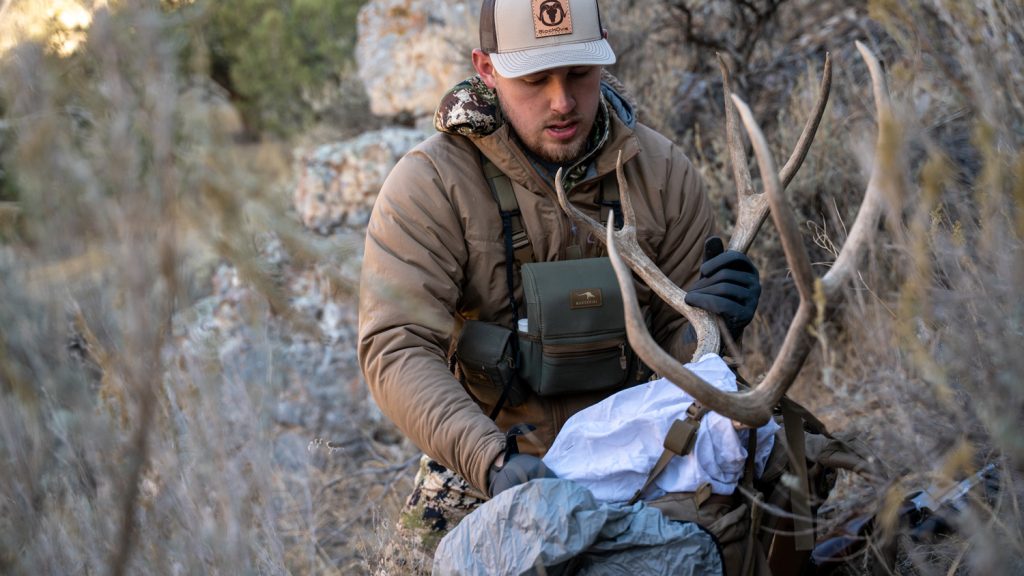Down vs. Synthetic

When it comes to choosing how to keep warm in the outdoors, we’re lucky to have so many options. When choosing gear to take on a hunt, or any outdoor excursion, the question of down or synthetic may have crossed your mind before. Down insulation is the fluffy undercoat feathers that come from ducks, geese and other waterfowl. Synthetic insulation is man-made and is made up of fine polyester filaments that are designed to create pockets of air between the fibers. If you’re like me, you may have more than one option from each category.
I know of people who are devout down users and wouldn’t think of carrying around any heavy synthetic insulation in their pack. I also know of people who are on the opposite side of the fence and wouldn’t risk taking down that can get wet and fail in harsh conditions. So, which type of insulation is right for you? Let’s dig in to some of the qualities of each type to help you decide.
Down
Down is well known for being lighter and more compressible overall than synthetic insulation. This is a fairly generic statement, but it’s pretty true. My 10 degree Western Mountaineering Versalite sleeping bag (long version) is listed as weighing 2 lbs. 2 oz. and my Kifaru 20 degree slick bag (wide version) is listed at 3 lbs. 4.8 oz. A little over a pound may not seem like much, but keep in mind that the slick bag is about 35% heavier than the Versalite. One of the main potential downsides to down insulation is that it does not insulate well (or at all) when wet. Some manufacturers are working to address this issue by applying coatings to their down, which they call coated or treated down. They coat the down with a water-resistant treatment at the molecular level to keep the down from absorbing water. Before the down is packed into the shell, each individual feather is treated with a special nanomolecular coating that allows the feather to resist moisture; this is also called hydrophobic coating. The treatment is applied to each feather in the jacket/sleeping bag/etc., adding an almost negligible increase to the overall weight since the treatment is applied on such a micro scale. It has also been proven that the addition of the hydrophobic coating to the down does not affect the down’s ability to loft, so there is no loss in warmth retained either with the treated down. I personally don’t have any experience with treated down products, so I can’t say if the hydrophobic coating works as desired and it still insulated to some degree when wet, but I did get a new sleeping bag recently that is a hybrid coated down/synthetic mix that I can’t wait to try this season. So you could say I’m drinking the ‘coated down Kool-Aid’!

Fill Power & Fill Weight
Two key numbers to keep in mind when evaluating a down product are fill power and fill weight. A downs fill power, or rating, indicates the quality of the down, and higher is better. Down fill rating is a measurement of down quality, and the rating is determined by placing 1 ounce of down in a graduated cylinder and placing a weighted disk on top of the down. After about a minute or so, the disk is removed and the volume of down in the cylinder is recorded in cubic inches. This volume number is then used as the fill rating number.
So, a higher rated down means that less of it will be required (compared to a lower rated down) to capture the same amount of heat. The reason people say down doesn’t insulate when wet is that it loses its loft when wet, and with no loft it can’t trap heat nearly as efficiently to keep you warm.
Another important number when talking about down is the fill weight. Fill rating and fill weight are sometimes confused. Fill weight is simply a measure of how much down is contained inside the item in question, usually measured in grams. For reference, a jacket with 330g of 650 power down should be comparably warm with a jacket that has 120g of 800 power down. But there are many other factors that contribute to how warm a jacket may feel when worn, even in the same conditions, such as body composition and how hot/cold you normally run. So take such comparisons with a grain of salt.

Synthetic
Synthetic insulation is man-made polyester that is heavier than down but insulates better than down when wet since it doesn’t need to maintain any loft to trap heat like down feathers do. The higher quality, softer-to-the-touch synthetic insulation is usually made up of finer filaments with more air space between them. The thickness of synthetic insulation is usually expressed as grams per square meter (this is not to be confused with the total weight). As a general rule of thumb synthetic insulation in the range of 50g-100g per square meter are better suited for spring or fall activities, or they can also be used in colder conditions when paired with other layers. 100-200g per square meter rated items are more ideal for colder conditions.
Synthetic insulation is overall heavier than down. A 0 degree down sleeping bag will weigh less than a 0 degree synthetic bag (comparing similar lengths/widths/shapes/etc.). The synthetic bag will also take up more space in your pack, but it’s not a drastic difference.
The benefit synthetic insulation has over down is that it doesn’t lose its insulative properties when wet. I remember listening to a podcast in which the hosts were talking about how they loved their synthetic sleeping bags because they could crawl in with wet clothes on at night and wake up dry in the morning. I’ve tried this and it does work, but don’t think that you’ll be toasty warm the second you zip up your bag! This is possible with synthetic insulation because it ‘breathes’, or allows moisture from inside to travel through the material to the outside without compromising the materials ability to keep your body heat inside the bag with you. This is why you should never hike in down clothing; your perspiration will compromise the downs loft as it tries to escape the garment, and as soon as you slow down or stop it won’t keep your body heat trapped inside, and you’ll get cold.
what's right for you?
So what type of insulation is right for you? The answer is it depends. For me, it typically boils down to the conditions I expect to encounter. If I’m going into the backcountry in my home state of Utah, I will almost always lean towards down since the climate is overall pretty dry. But, on trips to Alaska, I lean towards synthetic. I haven’t yet been in a situation in my trips to Alaska where I’ve had down fail me, but because of stories I’ve heard and conditions I’ve witnessed, I like having the peace of mind that synthetic insulation provides me. I like knowing that my sleeping bag will keep me warm and dry me out if I get in with wet clothes on. I also like how my synthetic sleeping bag will keep me warm when it’s been raining all night long, and I wake up to little pools of condensation water that dripped off my tent ceiling and onto my bag. I typically pack a down jacket and pants on all my back country trips, but a few season ago I got a lightweight synthetic jacket and have really liked it and enjoyed not needing to be as mindful of keeping it dry. When it rains and I’ve got my down insulation layers on, I’ll throw on my rain gear to keep dry.
If I had to choose one versus the other for all my insulation layers and my sleeping bag, I would probably go with down. But the beauty is we’ve got so many insulation choices when it comes to down and synthetic products, not to mention hybrid down/synthetic products that combine the benefits of both. Try some of each kind and find out which you prefer and what works best for you. There’s never been more options to keep warm in the mountains!
